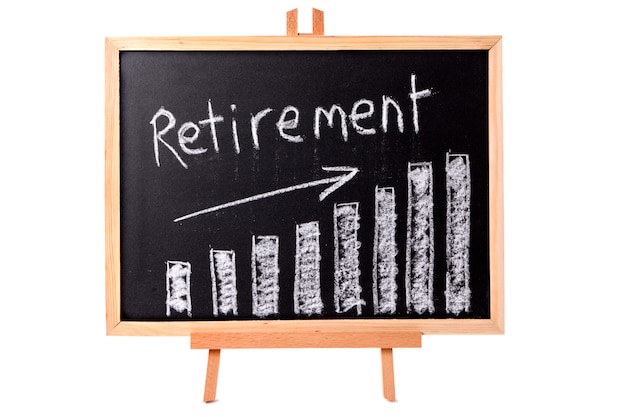In the golden years of retirement, securing a comfortable and steady income stream becomes a top priority for most investors. While many retirees rely on Social Security benefits and pension plans to cover their living expenses, these sources may not be enough to maintain a desired standard of living. Enter retirement stocks: companies that pay dividends regularly, providing investors with a steady income stream. In this article, we’ll discuss some of the best retirement stocks for income investors, focusing on those with a solid history of paying dividends and sustainable growth prospects.
Why Retirement Stocks Matter
With people living longer and medical costs continually rising, it’s essential for retirees to have a reliable income source that can keep up with inflation. Retirement stocks offer an opportunity to generate regular income and grow capital over the long term, providing a safety net for those entering retirement or already in it. Furthermore, dividend-paying stocks can provide an essential source of passive income that helps supplement Social Security benefits and other sources of retirement income.
Criteria for Choosing Retirement Stocks
Dividend Yield:
The first criterion for selecting retirement stocks is their dividend yield – the amount of money paid out to shareholders as a percentage of the stock’s price. A higher yield generally means more income for investors, making it an attractive option for those looking to maximize their retirement income.
Dividend Growth:
Another crucial factor is the company’s history of dividend growth. Investors should look for stocks that have consistently increased their dividends over time, demonstrating a commitment to shareholders and the potential for continued income growth in retirement.
Financial Stability:
A stable company with a solid financial footing is crucial for generating consistent income. Look for stocks from companies with strong balance sheets and healthy cash flow, ensuring they can continue paying dividends even in uncertain economic conditions.
Best Retirement Stocks for Income Investors
Real Estate Investment Trusts (REITs)
Real estate investment trusts (REITs) are a popular choice for income-focused investors due to their high dividend yields and the ability to generate consistent rental income. REITs invest in various property types, including commercial buildings, residential apartments, and even healthcare facilities, providing exposure to diverse sectors and income streams.
Utilities
Another sector worth considering is utilities, which provide essential services like electricity, natural gas, and water. These companies typically have stable revenue streams and reliable cash flows, making them attractive options for income investors looking to secure a steady retirement income stream.
I. Introduction: Retirement is a critical stage in an investor’s life, marked by the transition from active income earning to relying on savings and investments for income. At this point, the desire for a steady and reliable income stream becomes paramount, along with capital preservation to ensure that savings last throughout retirement. Consequently, creating a solid investment strategy is essential. In this guide, we will focus on the importance of investing in
dividend-paying stocks
for retirement income.
Why Dividend-Paying Stocks?
Dividend-paying stocks offer several advantages for retirees. First, they provide steady and reliable income streams, which can help cover expenses during retirement. Moreover, some dividend stocks offer higher yields than fixed-income securities like bonds, making them an attractive alternative for income-seeking investors. Second, well-managed dividend stocks have the potential for capital appreciation, allowing your portfolio to grow over time and keep pace with inflation.
Upcoming Sections in this Guide
In the following sections, we will discuss various aspects of investing in dividend-paying stocks for retirement income. We’ll explore different strategies for selecting dividend stocks, assess risk factors to consider, and discuss how to create a balanced portfolio that meets both income and capital preservation goals. Stay tuned for valuable insights on building a solid retirement investment strategy using dividend-paying stocks.
Understanding Dividend Yield and Important Metrics for Income Investors
Definition of dividend yield
Dividend yield is a significant financial metric for income investors that measures the return on investment from a company’s dividends. Bold It is calculated by dividing the annual dividends per share by the current market price per share. For instance, if a company pays an annual dividend of $2.50 and its stock price is $50, the dividend yield would be 5% (i.e., $2.50 divided by $50).
Formula:
Dividend yield = Annual dividends per share ÷ Current market price per share
Dividend growth rate and why it matters
Another crucial metric for income investors is the dividend growth rate. This metric refers to a company’s ability to increase its dividends over time. A consistent dividend growth indicates that the company is generating more earnings and has the financial strength to reward shareholders with higher dividends.
The ability of a company to increase its dividends over time:
A history of increasing dividends can provide investors with long-term capital appreciation and a stable income stream.
Price-to-Earnings (P/E) ratio and its significance in valuation
The Price-to-Earnings (P/E) ratio is a widely used metric for determining the value of a stock based on its earnings. The P/E ratio shows how many dollars an investor pays for each dollar of earnings. For example, if a company’s stock price is $50 and its earnings per share (EPS) are $10, the P/E ratio would be 5.
Relation between stock price and earnings:
A lower P/E ratio may indicate that a stock is undervalued, making it an attractive investment opportunity for income investors.
Other key metrics for income investors
There are other essential metrics for income investors, including:
Debt-to-Equity ratio:
This ratio measures a company’s debt level in relation to its equity, providing insight into its financial strength and ability to pay dividends consistently.
Free cash flow:
This metric indicates a company’s ability to generate cash after paying for its operating expenses and capital expenditures, which can be used to pay dividends or reduce debt.
Payout ratios:
This ratio shows the percentage of earnings that is paid out as dividends, giving investors an idea of a company’s dividend sustainability.

I Best Retirement Stocks for Income: Large Cap Stocks
Introduction to large cap stocks
Large cap stocks, also known as large-company stocks, are shares of well-established and major corporations with a market capitalization of over $10 billion. Investing in large cap stocks offers several benefits for retirement investors, including:
- Stability: Large companies have a proven track record of generating consistent profits and are less volatile than their smaller counterparts.
- Dividends: Many large cap stocks pay attractive dividends, providing a steady income stream for retirees.
- Growth Potential: While some large cap stocks may not offer the same growth potential as small and mid-cap stocks, others can still deliver solid returns over the long term.
Examples of top dividend-paying large cap retirement stocks
Here are three examples of top dividend-paying large cap retirement stocks across different industries:
Johnson & Johnson (JNJ)
Industry: Healthcare
Johnson & Johnson is a leading multinational corporation and the world’s largest manufacturer of healthcare products. The company operates through three segments: Consumer Health, Pharmaceuticals, and Medical Devices. With a solid dividend yield of around 2.3% and a consistent growth rate, JNJ is an attractive option for retirement investors.
ExxonMobil (XOM)
Industry: Energy
ExxonMobil is the largest publicly traded international oil and gas company, with operations in every facet of the industry. Despite recent challenges in the energy sector, XOM continues to pay a generous dividend yield of around 4.5%. The company’s solid financial position and strong cash flow make it an excellent choice for income-focused investors.
Microsoft (MSFT)
Industry: Technology
Microsoft is a leading technology company and the world’s largest software maker, known for its popular products like Windows, Office Suite, and Xbox. MSFT offers a dividend yield of approximately 1.3%, with a moderate growth rate that makes it an attractive choice for retirement investors looking for a balance between income and capital appreciation.

Best Retirement Stocks for Income: Mid Cap Stocks
Introduction to mid cap stocks
Mid cap stocks are a popular investment choice for those seeking income in retirement. These stocks represent companies with market capitalizations between $2 billion and $10 billion, making them larger than small cap stocks but smaller than large cap stocks. Investing in mid cap stocks offers several benefits, including potential for higher growth compared to large cap stocks, diversification opportunities, and the ability to generate consistent income through dividends.
Definition and benefits of investing in mid cap stocks
Definition: Mid cap stocks represent companies with a market capitalization between $2 billion and $10 billion. This size range places these companies in the middle of the market capitalization spectrum, making them attractive to investors looking for a balance between growth potential and income generation.
Benefits: Mid cap stocks offer several benefits, including:
– Higher growth potential: Compared to large cap stocks, mid cap stocks can have higher growth potential due to their smaller size and less established position in the market. This can lead to greater capital appreciation for investors over the long term.
– Diversification opportunities: Investing in mid cap stocks allows investors to diversify their portfolios beyond large cap stocks, which can help reduce overall risk and volatility.
– Consistent income generation: Many mid cap companies pay dividends to their shareholders, providing a steady stream of income for retirees.
Examples of top dividend-paying mid cap retirement stocks
3M Company (MMM)
Industry: The 3M Company operates in the manufacturing industry, producing a wide range of products including adhesives, abrasives, and personal protective equipment.
Dividend Yield and Growth Rate:
As of 2023, the dividend yield for 3M is around 2.4%, while the company has increased its dividend for over 60 consecutive years. This consistent dividend growth makes 3M an attractive option for income-seeking investors in retirement.
Caterpillar Inc. (CAT)
Industry: Caterpillar Inc. operates in the industrial machinery industry, manufacturing and selling heavy equipment, engines, and industrial gas turbines.
Dividend Yield and Growth Rate:
With a dividend yield of approximately 2.3% as of 2023, Caterpillar offers investors a steady stream of income. The company has also increased its dividend for over 25 consecutive years, demonstrating its commitment to shareholders.
Realty Income Corporation (O)
Industry: Realty Income Corporation is a real estate investment trust (REIT) that specializes in owning and operating commercial properties, including retail, industrial, and office spaces.
Dividend Yield and Growth Rate:
Realty Income offers a dividend yield of around 3.8% as of 2023, making it one of the higher-yielding mid cap stocks on this list. The company has also increased its dividend for over 750 consecutive months, a streak that began in 1968 and is a testament to its financial stability.

Best Retirement Stocks for Income: Small Cap Stocks
Introduction to small cap stocks
Small cap stocks refer to companies with a market capitalization between $300 million and $2 billion. They represent an attractive investment opportunity for retirement income seekers due to their potential for higher growth rates and dividend yields compared to larger companies. Investing in small cap stocks can help diversify a retirement portfolio, reduce overall risk, and potentially enhance income streams.
Definition and benefits of investing in small cap stocks
Definition:
Small cap stocks are equities issued by companies with a market capitalization smaller than mid-cap or large-cap stocks. Market capitalization is the total value of all a company’s outstanding shares of stock. Small cap stocks offer investors exposure to growth opportunities that may not be available with larger companies.
Benefits:
Small cap stocks have several advantages that make them attractive for retirement income investors. These include:
- Higher growth potential: Small cap companies may have more room to grow than larger, established firms.
- Diversification: Investing in small cap stocks can help reduce overall portfolio risk by spreading investments across various sectors and companies.
- Income generation: Many small cap stocks pay dividends, offering income stream stability for retirement investors.
Examples of top dividend-paying small cap retirement stocks
Realty Income Growth Trust (OGT)
Industry: Real Estate Investment Trusts
Dividend yield: 3.6%
Growth rate: 1.8%
Realty Income Growth Trust (OGT) is a monthly dividend real estate investment trust that focuses on single-tenant commercial properties, primarily in the retail sector. The company’s diverse portfolio comprises over 1,000 properties across various industries, including retail, office, and healthcare. OGT has increased its monthly dividend for over 750 consecutive months as of March 2023.
Tanger Factory Outlet Centers, Inc. (SKT)
Industry: Real Estate – Retail
Dividend yield: 3.5%
Growth rate: 1.8%
Tanger Factory Outlet Centers, Inc. (SKT) is a real estate investment trust that owns and operates outlet shopping centers across the United States. The company’s portfolio includes 45 outlet centers, primarily located in major tourist attractions or urban areas. Tanger Factory Outlet Centers pays a quarterly dividend to its shareholders and has increased its dividend for 29 consecutive years.
Ventas, Inc. (VTR)
Industry: Healthcare REITs
Dividend yield: 3.9%
Growth rate: 4.1%
Ventas, Inc. (VTR) is a healthcare real estate investment trust that owns and manages senior housing communities, hospitals, and other healthcare properties. The company’s diverse portfolio consists of approximately 1,200 assets across the United States, Canada, and the United Kingdom. Ventas has increased its dividend for 17 consecutive years and aims to grow its dividend by at least 5% annually.

VI. Conclusion
In our analysis, we’ve identified a number of top-performing retirement stocks that cater to income investors across various market capitalizations. Let’s recap these noteworthy picks:
Johnson & Johnson (JNJ)
: With a stable dividend yield of around 2.5%, this large-cap pharmaceutical giant continues to be an attractive investment option for income seekers.
ExxonMobil (XOM)
: As a mid-cap energy giant, ExxonMobil’s dividend yield of approximately 5.3% makes it an appealing choice for retirement investors.
Microsoft (MSFT)
: With a dividend yield of around 1.3%, this large-cap technology company’s stable growth and regular dividends make it an attractive choice for those seeking both income and capital appreciation.
3M Company (MMM)
: With a dividend yield of about 2.5%, this mid-cap industrial conglomerate is a reliable income source.
Caterpillar Inc. (CAT)
: Yielding around 2.8%, this large-cap industrial manufacturer offers a solid dividend stream for retirement investors.
Realty Income Corporation (O)
: Known as the “Monthly Dividend Company,” Realty Income is a REIT with a dividend yield of approximately 3.8%.
Tanger Factory Outlet Centers, Inc. (SKT)
: This retail REIT offers a dividend yield of around 3.8%, making it an attractive option for retirement investors looking for regular income.
Ventas, Inc. (VTR)
: With a dividend yield of approximately 3.5%, this healthcare REIT is a stable investment choice for retirement income investors.
Recap of the best retirement stocks for income investors across large, mid, and small cap categories
Now that we’ve discussed some of the best retirement stocks for income investors in various market capitalizations, let’s move on to the importance of diversification and portfolio review.
Importance of diversification and regular portfolio review for retirement income investors
It’s crucial to remember that no single stock or investment strategy is foolproof. Diversification plays an essential role in managing risk and maximizing potential returns for retirement income investors.
Regular portfolio reviews
(h5)helps maintain a well-balanced investment portfolio, enabling investors to adjust their holdings as market conditions change and their financial circumstances evolve. By periodically assessing their portfolio’s asset allocation, income investors can ensure they remain on track to meet their retirement goals.
Encouragement to consult a financial advisor before making investment decisions in the golden years
Finally, it’s essential for retirement income investors to consult a financial advisor before making any investment decisions. A professional can provide valuable guidance based on an individual’s unique financial circumstances, risk tolerance, and retirement goals.





